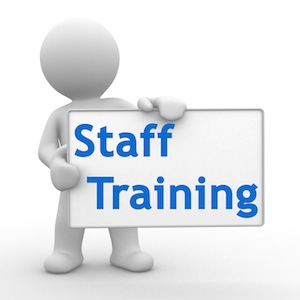 My last article was about our recruitment selection process works. This time I look at my new staff induction process. Our employees are the front line in our customer relationship, they are key to having happy customers who regularly chose to spend money with us.
My last article was about our recruitment selection process works. This time I look at my new staff induction process. Our employees are the front line in our customer relationship, they are key to having happy customers who regularly chose to spend money with us.
I think that new employee induction is so important I undertake the role myself. This ensures that there is a consistent process that is delivered correctly. Operating a business with the mix of products that are in a modern convenience store requires a team of people with a significant level of knowledge that runs from customer service and care to regulatory awareness and contract law. Bringing new employees up to this level of capability takes time and planning. I have a check list for each employee to ensure that all the issues relating to their employment are covered.
The first thing I do is to take a new employee on a tour of the premises that takes in the shop floor, stockrooms, staff facilities and outside. On the walk around the building I introduce the new employee to members of my team as we meet them. I explain what each member of staff does and who the new person should talk to when they have a query. I also cover our fire safety policy and what should be done in the event of a fire. After the tour I ask them about what they have seen and learnt to gauge areas that I may need to go over again.
The next step is to show them a DVD on Customer Service that was produced for Budgens stores. When they have watched this I ask them about what they have learnt from the video to make sure that they understand how we want our customers to be treated. This I follow with a DVD on food handling which I obtained from Somerset Environmental Health. Again I ask them what they have learnt and reinforce the key points.
Next we make them look like part of our team by issuing them with their uniform. We provide shirts or blouses, jumpers and aprons with the deli staff getting a boater as well. We give staff a £20 allowance to help cover the cost of either black trousers or skirt. (After the initial investment when we first introduced our current uniform we spend between £300 and £500 a year to keep up our employees’ appearance). As I said in the last article we have a 20 page new employee pack of paperwork and one of these pages covers the issue of uniform.
Next item on my induction agenda is till training. To assist with this we are able to put one of our tills into training mode. With the help of a till training sheets the I have written for employees and a basket full of test products to ensure that the trainee experiences the key aspects of till use I show them how the till works. We have a Londis EPoS system so the training covers how to scan products, what information appears on the till screen, how to finish a sale and the layout of the till drawer.
We stock alcohol and tobacco so I introduce the issue of Age Restricted products to them and how the till system reacts when these products are scanned. The main training for selling Age Restricted products happens away from the sales floor because of the significant importance of the issue.
Once I am confident that the new employee understands the basics of the till I leave them to shadow one of our experienced till staff for an hour or so and then they reverse roles to build their ability. Until they have completed their training on selling alcohol and tobacco the new employee is instructed to obtain permission from a qualified employee before completing a sale.
For till staff this is as far as their induction training goes, but for sales floor staff I go on to cover the issues around merchandising, display, shelf edge pricing, restocking, stock rotation and best before/sell by dates.
Over the following days I regularly talk to the new employee to evaluate their understanding of this initial burst of training and how they are complying with the standards that I expect. Induction training is the time that I look to get the key messages across to our new employees about the behaviour we expect from them and the rest of our team.
We successfully achieved Investors in People status in 2006, a process that allowed us to effectively benchmark our employee processes. We decided not to undertake reassessment in 2009 as we could not see any added value to our business for the £1000 plus it would have cost at that time.



Comments
This article doesn't have any comments yet, be the first!